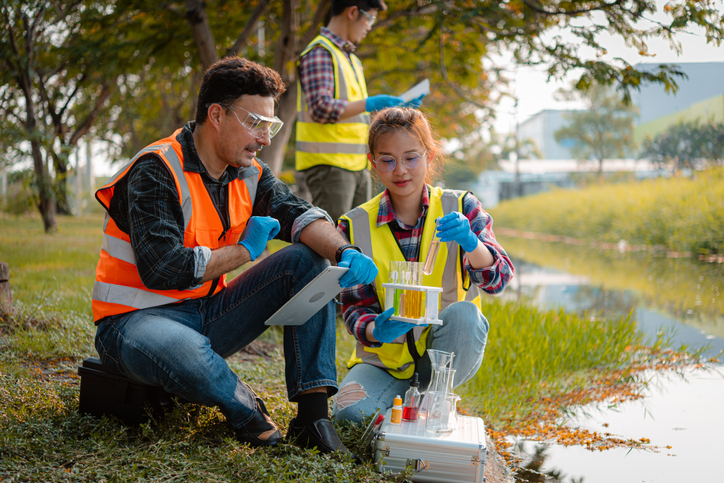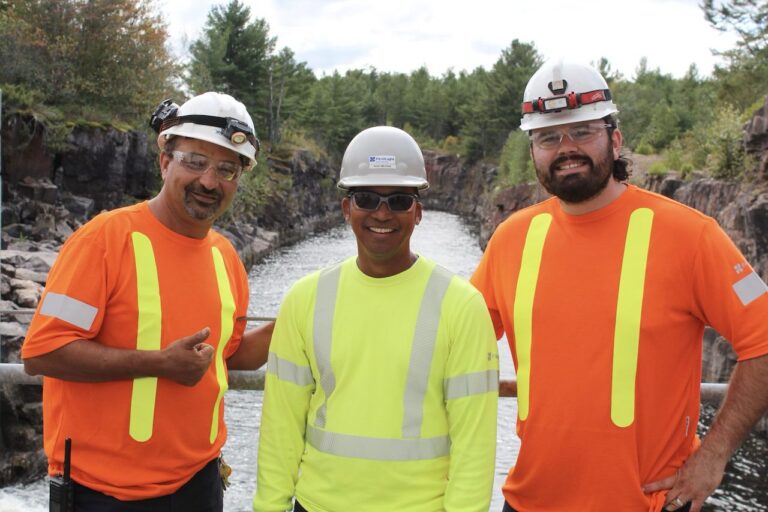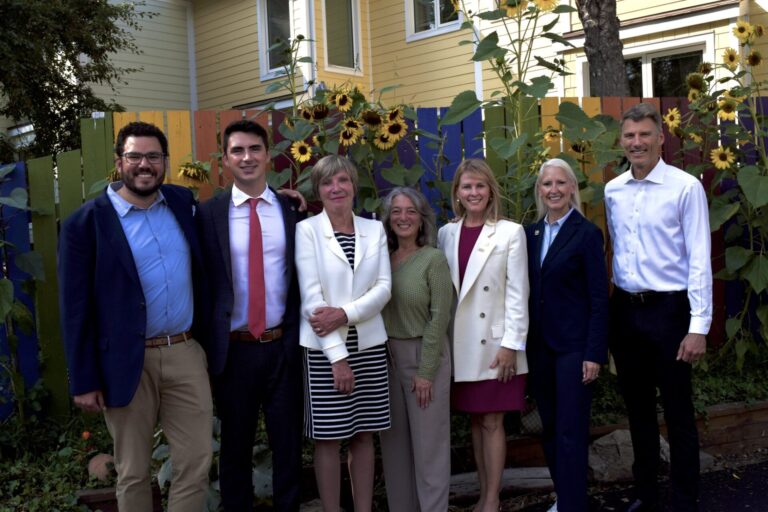Monday, September 22, 2025
An environmental assessment certificate has been issued to Teck Highland Valley Copper Partnership for the Highland Valley Copper Mine Life Extension (HVC) project near Logan Lake, following a joint decision by provincial ministers in British Columbia. This project marks the first combined assessment and permitting process.
Tamara Davidson, Minister of Environment and Parks, and Jagrup Brar, Minister of Mining and Critical Minerals, made their decision after carefully considering the environmental assessment by B.C.’s Environmental Assessment Office (EAO).
The HVC project will extend the life of the operating Highland Valley copper mine from 2028 to 2043. The mine expansion is predicted to produce approximately 900 million additional tonnes of ore and nearly two million additional tonnes of copper.
The ministers noted in their decision that HVC will provide economic benefits to the province, the local community and First Nations. The mine expansion will increase local employment by adding 200 more permanent jobs, along with 500 to 1,250 jobs during construction. The mine currently employs 1,320 people. Without the expansion, the mine would end production in 2028 and wind down its operations.
The EAO and ministries of Environment and Parks; Mining and Critical Minerals; and Water, Land and Resource Stewardship reviewed the application together in the first fully combined review process under the 2018 Environmental Assessment Act. To streamline and expedite provincial authorizations for this priority critical minerals project, the EAO co-ordinated with permitting agencies to enable Teck to submit a single application for the environmental assessment certificate and all major permits.
The coordinated review is part of work by provincial regulators to achieve efficiencies in decision-making on priority projects. Conducting the assessment and permit reviews together can save as much as two years on provincial authorizations. Permit decisions are expected soon.
The project assessment involved extensive consultation with technical experts, First Nations, provincial agencies, local governments and the public. In making their decision, the ministers acknowledged that while the HVC project itself would not have significant adverse impacts beyond those of the existing mine, in operation since the 1960s, the expansion would exacerbate the combined impacts from this and other projects in the region on water quantity and First Nations’ access to land and cultural practices.
As a result, the ministers have included 17 legally binding conditions in the environmental assessment certificate, intended to prevent or reduce potential adverse environmental, economic, social, cultural and health effects from HVC, and mitigate impacts to First Nations.
With these legally binding requirements, and requirements applied by other regulatory bodies for other provincial authorizations if granted, the ministers determined that significant adverse effects can be prevented or mitigated. Key requirements include developing plans, subject to EAO approval, to:
- manage and mitigate impacts on surrounding watersheds;
- avoid or reduce the loss of wetlands and riparian ecosystems;
- reduce the impacts of the project on Nlaka’pamux Nation food sovereignty to support food, social and ceremonial needs;
- minimize light pollution prior to and throughout operations; and
- reduce the impact of construction workers on the availability of accommodations in local communities.
Under the Environmental Assessment Act, First Nations participating in the process have the opportunity to provide consent or lack of consent for the project. Of the 17 First Nations that engaged in the environmental assessment, 10 consented to the project and two groups representing six First Nations initiated dispute resolution.
Every project that undergoes an environmental assessment is assessed thoroughly on the specific and individual aspects of that particular project, including its potential environmental, economic, social, cultural and health effects, and impacts on First Nations and their rights.
Background on mining operation
The Highland Valley Copper Mine Life Extension (HVC) project is the first reviewed under the Environmental Assessment Act in which applications to the Environmental Assessment Office (EAO) and permitting agencies were combined into a single application.
The EAO collaborated with the ministries of Environment and Parks, Mining and Critical Minerals, and Water, Land and Natural Resource Stewardship to streamline the technical review and permitting process for the project to enable permit decisions right away after the assessment certificate decision.
The environmental assessment and permitting reviews are usually done sequentially, with permitting taking one to two years to complete after a certificate is issued.
This collaboration provides a more comprehensive, timely regulatory process, while ensuring all regulators apply proper due diligence to protect the health and well-being of the environment and communities.
Highland Valley Copper Mine life extension:
- The environmental assessment process for the HVC project began in September 2019 and concluded when the certificate was issued on June 17, 2025.
- Subject to receiving all required permits, Teck Highland Valley Copper Partnership is now approved to modify the existing mine to continue operations for an additional 18 years. The mine would have reached its production limits in 2028.
- The project will involve an expansion of the existing open pit, as well as upgrades and modifications to some mine site infrastructure and processing facilities to support the increased production capacity. This will result in 1,526 hectares of new land disturbance.
- Construction costs are estimated at $1.5 billion, with an additional $690 million in operations over the additional 18 years.
First Nations engagement and dispute resolution:
- The EAO sought consensus at key milestones with 17 potentially affected First Nations.
- Ministers met with leadership of Stk’emlúpsemc te Secwépemc Nation, Nlaka’pamux Nation Tribal Council, Citxw Nlaka’pamux Assembly and Lower Nicola Indian Band prior to making their decision.
- Two groups representing six First Nations triggered dispute resolution at the final stage of the assessment.
- Nlaka’pamux Nation Tribal Council withdrew from dispute resolution after reaching an agreement with the Province outside of the assessment process, which resolved some of their concerns.
- Following the conclusion of dispute resolution with Stk’emlúpsemc te Secwépemc Nation, the EAO modified some of the conditions recommended to ministers for inclusion in the environmental assessment certificate.
- Reports from both dispute resolution facilitators were posted to the EAO’s project-information website and provided to ministers to support their decision.
- Multiple First Nations conducted their own Indigenous-led processes to assess potential effects to Indigenous interests. Their reports were included in the package of information on the assessment provided to ministers.
- Key issues raised by First Nations included: historical effects of mining on land, water, air, animals and plants and cumulative effects with forestry and other industrial development in the area; limited ability for First Nations to exercise Aboriginal rights, including for harvesting and cultural and spiritual practices; and water scarcity in the region, existing water quality issues and additional effects from continued mining.
- Several First Nation also acknowledged economic benefits from the mine; however, others did not perceive the benefits to outweigh the risks.
Community collaboration:
- The EAO sought extensive public feedback throughout its review, with about 40 comments received from members of the public during three public comment periods. Comments and concerns were incorporated into the final assessment report.
- The technical advisory committee for the project’s assessment included representatives from the District of Logan Lake, Village of Ashcroft, and Thompson-Nicola Regional District, as well as technical experts and First Nations and B.C. government representatives.
Compliance and enforcement:
- Teck is required to comply with 17 legally enforceable requirements established as a condition of receiving the environmental assessment certificate, and to build and operate the project in accordance with the certified project description.
- EAO compliance and enforcement officers monitor compliance with environmental assessment certificate requirements in co-ordination with other regulatory agencies.
- Monitoring and inspection of the project will begin with the start of construction.
For further information, click here.
Featured image credit: Getty Images












